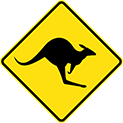The Alaskan Malamute is a magnificent and powerful breed of dog known for its impressive physical characteristics and unique personality traits. This breed, which originated in Alaska, has a long history of working alongside humans in challenging Arctic conditions. In this comprehensive discussion, we will delve into the traits of Malamute dogs, covering their appearance, temperament, intelligence, exercise needs, grooming requirements, and suitability as family pets.
1. Physical Appearance:
One of the most striking features of the Alaskan Malamute is its impressive size and strength. These dogs are considered a large breed, with males typically standing between 24 to 26 inches at the shoulder and weighing anywhere from 85 to 100+ pounds, while females are slightly smaller. Their muscular build and strong bones reflect their heritage as sled dogs and working animals.
Malamutes have a thick double coat that provides insulation against the harsh Arctic cold. Their coat can come in various colors, including shades of gray, black, sable, and red, often with white markings on the face, paws, legs, and belly. Their erect ears, plume-like tail, and expressive almond-shaped eyes give them an alert and dignified appearance.
2. Temperament:
Malamutes are known for their friendly and affectionate nature. They are social dogs that typically get along well with people and other dogs, although early socialization is crucial to ensure they develop appropriate behaviors. However, their strong prey drive may make them less compatible with small animals like cats or rabbits.
These dogs have a playful and mischievous side, often maintaining their puppy-like exuberance well into adulthood. They can be quite vocal, often “talking” through howls, whines, and other vocalizations, which is a characteristic reminiscent of their ancient roots as working dogs that relied on communication with humans.
3. Intelligence:
Malamutes are intelligent dogs, but their intelligence is often misunderstood. They are independent thinkers, which can sometimes be mistaken for stubbornness. While they may not always obey commands with unwavering loyalty, they are known for their problem-solving abilities and adaptability.
Training Malamutes requires patience and consistency. They can be trained for various tasks and activities, but it’s important to use positive reinforcement techniques and keep training sessions engaging and fun. Their intelligence makes them excellent at tasks like sled pulling and search and rescue work, but they may not excel in obedience trials as some other breeds do.
4. Exercise Needs:
Malamutes are highly active dogs that require regular exercise to stay happy and healthy. Their working heritage means they have an abundance of energy to burn off. Daily exercise is essential to prevent boredom and the development of undesirable behaviors.
Malamutes thrive in environments where they can run and play, making them well-suited for families with large, securely fenced yards. They also enjoy activities like hiking, backpacking, and even participating in dog sports such as agility or weight pulling. It’s important to note that they do not tolerate hot weather well due to their thick coat, so exercise should be moderated during the summer months.
5. Grooming Requirements:
Maintaining a Malamute’s coat can be a significant undertaking. They shed year-round, with a more substantial shedding period during seasonal changes. Regular brushing is essential to remove loose fur and prevent matting. Many Malamute owners invest in a good quality deshedding tool to help manage shedding.
Their thick double coat acts as insulation in cold weather but can become a liability in warm climates. It’s crucial to provide them with a cool and shaded environment during hot weather to prevent overheating. Some owners choose to have their Malamutes groomed professionally or even have their coats thinned in the summer months.
6. Suitability as Family Pets:
Alaskan Malamutes can make wonderful family pets, but they are not the right choice for every family. Here are some considerations for prospective Malamute owners:
- Space: Malamutes need ample space to move and play. They do best in homes with large yards or access to open spaces.
- Activity Level: Families that lead active lifestyles will find a good match in Malamutes. These dogs thrive on physical activity and mental stimulation.
- Socialization: Early and consistent socialization is crucial to ensure that Malamutes get along with other dogs and animals.
- Children: Malamutes are generally good with children and can be quite protective, but they are also large and strong, so supervision is essential during interactions with young children to prevent accidents.
- Training: Owners should be prepared for the training challenges that come with an independent-minded breed. Positive reinforcement training methods work best with Malamutes.
- Time Commitment: Malamutes require time and attention. They thrive on human companionship and can suffer from separation anxiety if left alone for extended periods.
In conclusion, Alaskan Malamutes are magnificent dogs with a unique set of traits and characteristics that make them stand out among breeds. They are known for their impressive physical appearance, friendly temperament, intelligence, and their need for regular exercise and grooming. While they can make wonderful family pets for the right households, potential owners should carefully consider their suitability for this breed and be prepared to invest time and effort into training and care. With the right environment and commitment, a Malamute can be a loyal and loving companion for many years to come.
